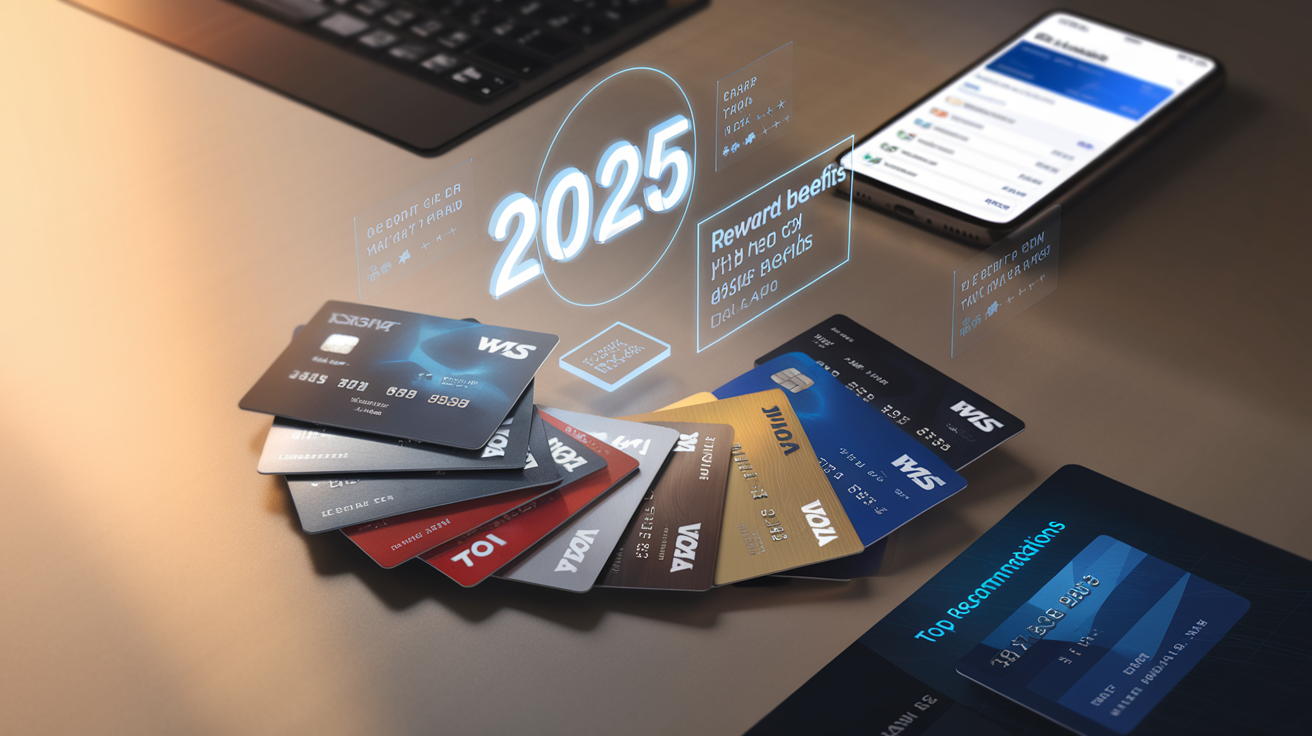Start Business

Starting a Business: Making Smart Financial Choices
Are you dreaming of launching your own business but feeling overwhelmed by the financial aspects? You’re not alone. Many aspiring entrepreneurs struggle with making informed financial decisions that can make or break their new ventures. In today’s complex business landscape, having access to objective, independent financial guidance is crucial—yet finding reliable information without hidden agendas can feel impossible.
At the heart of every successful business lies transparent financial planning and research-based decision making. Throughout this guide, we’ll explore how to make informed financial choices for your new business, implement transparency in your operations, and develop a solid financial plan based on thorough research. Our goal? To empower you with straightforward advice that puts your business needs first—no strings attached. 💼💡
Making Informed Financial Decisions for Your New Business

Making Informed Financial Decisions for Your New Business
Starting a business requires careful financial planning and informed decision-making. A solid financial foundation is crucial for sustainability and growth, especially during the early stages of your business journey.
Utilizing objective financial guidance and tools
For effective financial planning, startups should leverage available templates and tools designed specifically for financial modeling. These resources help streamline the planning process and allow founders to focus on key performance indicators (KPIs) that drive revenue projections. Tools range from basic spreadsheets to dedicated financial planning software, depending on your business needs and complexity.
When selecting financial planning tools, consider:
- Spreadsheets for manual data input
- Specialized software for automatic syncing of financial data
- CPA services for more complex financial structures
Tools like Pry can simplify financial planning without incurring high costs, making it accessible for new businesses with limited resources.
Understanding financial product options and limitations
A comprehensive financial plan includes several key components that every business owner should understand:
- Detailed revenue projections based on realistic assumptions
- Expense budgets (fixed and variable)
- Hiring plans aligned with growth objectives
- Income statements, cash flow statements, and balance sheets
- Capital requirements and funding strategies
- Break-even analyses to determine profitability timelines
- Financial ratios to monitor business health
It’s important to distinguish between financial plans and business plans. While business plans are narrative-driven, financial plans manifest as detailed spreadsheets (Pro Forma financial statements) that evolve as your business grows.
Evaluating services without cost barriers
Creating an effective financial plan doesn’t necessarily require substantial investment. Start by:
- Visualizing your long-term goals
- Determining relevant KPIs for your business model
- Selecting suitable templates or software
- Importing existing financial data
- Projecting future expenses categorized into direct and indirect costs
- Creating realistic revenue projections based on industry standards
- Organizing financial data into comprehensible reports or dashboards
- Testing assumptions through sensitivity analysis
Financial planning should not be overlooked during fundraising, as investors scrutinize projections closely. Setting constraints from the outset helps avoid excessive cash burn and aligns team activities with defined financial goals.
With a solid understanding of how to make informed financial decisions for your business, we’ll next explore the crucial aspect of Financial Transparency in Business Operations. This transparency builds trust with stakeholders and creates a foundation for sustainable growth through honest and open financial practices.
Financial Transparency in Business Operations

Financial Transparency in Business Operations
Now that we have covered making informed financial decisions for your new business, it’s essential to understand the importance of transparency in your operations. Financial transparency forms the backbone of stakeholder trust and effective decision-making.
A. Recognizing compensation models and partner relationships
Transparency begins with clear documentation of all compensation models and partner relationships. Just as financial reporting serves to document and communicate financial performance, businesses must openly disclose how compensation structures work and the nature of partnerships that may influence business decisions. This transparency ensures that all stakeholders understand potential biases or conflicts of interest that might affect business operations.
When establishing partnerships, it’s vital to standardize reporting formats regarding compensation arrangements. This adherence to the principles of accuracy, consistency, and transparency in financial reporting extends to how you disclose partner relationships to investors, customers, and other stakeholders.
B. Assessing product reviews and placements objectively
Objective assessment of product reviews and placements is crucial for maintaining integrity in business operations. Financial transparency in this area means clearly distinguishing between organic product placements and paid promotions.
Strong internal controls should be implemented to ensure that product reviews remain unbiased and that any financial arrangements influencing product placement are disclosed. This practice aligns with the key principles of effective financial reporting: accuracy, transparency, and relevance. Without such controls, businesses risk data inconsistency and potential human error in representing their product offerings.
C. Ensuring independence in financial recommendations
Independence in financial recommendations is paramount for building stakeholder trust. When businesses provide financial guidance or recommendations, they must ensure these are free from undue influence by compensation models or partner relationships.
This independence requires interdepartmental collaboration and clear explanations of financial data to all stakeholders. By maintaining this separation, businesses can improve decision-making processes and enhance operational efficiency while strengthening compliance with regulatory requirements.
With a foundation of transparency in your business operations, you’ll be better positioned to engage in research-based business financial planning. In the next section, we’ll explore how data-driven research can further strengthen your financial strategies and support long-term growth objectives.
Research-Based Business Financial Planning

Research-Based Business Financial Planning
Now that we’ve explored the importance of financial transparency in business operations, let’s turn our attention to how research-based financial planning can set your business up for long-term success.
Implementing thoroughly researched financial strategies
According to “Financing Startups: Understanding Strategic Risks, Funding Sources, and the Impact of Emerging Technologies,” a robust financial framework is essential for fostering entrepreneurial ventures that add significant value to society. The book emphasizes that entrepreneurs should thoroughly research various financing options at different stages of their projects. By understanding strategic risks and available funding sources, business owners can make more informed decisions about which financial strategies align with their specific business needs. The book outlines diverse funding methods including angel investing and crowdfunding, providing a comprehensive foundation for entrepreneurs to build their financial plans upon.
Selecting business products based on merit rather than marketing
When it comes to financial decisions, the reference material highlights the importance of looking beyond marketing claims to evaluate financial products and services based on their actual merit. The emergence of technologies like decentralized finance (DeFi) is creating new paradigms in the financial landscape. These innovations offer alternatives to traditional financing methods, but require careful research to determine their appropriateness for your specific business context. The book notes that technological advancements like ICOs (Initial Coin Offerings) and AI are reshaping startup financing, making it crucial for entrepreneurs to assess these options based on substantive benefits rather than hype.
Building trust through transparent business practices
The edited volume points out that transparency in financial practices builds trust with stakeholders, including potential investors. The comprehensive analysis of entrepreneurial finance provided by editors Carlos Lassala and Samuel Ribeiro-Navarrete demonstrates how openness about financial strategies can strengthen business relationships. The book’s exploration of the relationship between innovation and financing underscores that transparent communication about how emerging technologies are integrated into your financial planning can enhance credibility. This approach not only attracts funding but also establishes your business as forward-thinking and trustworthy in an increasingly complex financial environment.

As you embark on your entrepreneurial journey, remember that making informed financial decisions is the cornerstone of business success. Transparency in your operations not only builds trust with customers and investors but also helps maintain clarity in your own financial management. Research-based planning provides the solid foundation needed to navigate the complex business landscape.
We’re committed to empowering business owners like you with objective, straightforward guidance. While our resources can help guide your path, the most successful entrepreneurs combine external wisdom with their unique vision. Take these financial principles to heart as you build your business, and remember that sound financial management isn’t just about surviving—it’s about creating a sustainable enterprise that can thrive for years to come.
Self Employ Retirement

Charting Your Own Retirement Course: The Self-Employed Guide
As a self-employed individual, you enjoy the freedom of being your own boss, but this independence comes with a significant challenge: creating and funding your own retirement plan. Without an employer-sponsored 401(k) or automatic contributions, the responsibility falls entirely on your shoulders—and many self-employed professionals find themselves postponing this crucial financial planning step.
Whether you’re a freelancer, consultant, small business owner, or independent contractor, securing your financial future doesn’t have to be overwhelming. 💼 This guide will walk you through understanding your retirement options, introduce you to plans specifically designed for self-employed individuals, and share strategies to maximize your savings despite irregular income. We’ll also explore long-term planning considerations and how working with financial professionals can help you create a retirement strategy as independent and successful as your career.
Understanding Self-Employment Retirement Options

Understanding Self-Employment Retirement Options
When you’re self-employed, planning for retirement requires a different approach than what traditional employees experience. Without an employer-sponsored 401(k) or pension plan, you must take full responsibility for your financial future. Fortunately, there are several retirement options specifically designed for self-employed individuals that offer significant advantages.
Key differences from traditional employee retirement plans
Self-employed retirement plans differ from traditional employee plans in several important ways:
- Higher contribution limits: Many self-employed retirement plans allow you to contribute significantly more than the typical employee 401(k) plan.
- Dual role contribution: As both employer and employee, you can potentially make larger contributions to your retirement fund.
- Greater flexibility: You have more control over plan selection, investment choices, and contribution amounts.
- Administrative responsibility: You’re responsible for establishing and maintaining your retirement plan, rather than having an employer handle these details.
Tax advantages of self-employed retirement accounts
Self-employed retirement plans offer substantial tax benefits that can help reduce your current tax burden while building your retirement savings:
- Tax-deductible contributions: Contributions to plans like SEPs, SIMPLE IRAs, and solo 401(k)s are generally tax-deductible, reducing your taxable income.
- Tax-deferred growth: Your investments grow tax-deferred until withdrawal during retirement.
- Potential tax credits: You may qualify for tax credits for establishing certain retirement plans.
- Business expense deduction: Administrative costs associated with maintaining your retirement plan may be deductible as business expenses.
Impact on current and future financial planning
Establishing a self-employed retirement plan influences both your present finances and future security:
- Cash flow management: You’ll need to balance current business needs with retirement contributions.
- Long-term stability: Consistent contributions to your retirement plan can provide financial security in your later years.
- Retirement income strategies: Understanding contribution limits and growth potential helps project your future retirement income.
- Business succession planning: Your retirement plan can be integrated with your overall business exit strategy.
Now that we understand the fundamental aspects of self-employment retirement options, we’ll explore the most popular retirement plans available to self-employed individuals in detail. In the next section, “Popular Retirement Plans for Self-Employed Individuals,” we’ll examine specific plans like SEPs, Solo 401(k)s, and SIMPLE IRAs, along with their unique features and contribution limits to help you determine which option might work best for your situation.
Popular Retirement Plans for Self-Employed Individuals

Popular Retirement Plans for Self-Employed Individuals
Now that we’ve explored the fundamentals of self-employment retirement options, let’s examine the specific plans available to independent workers. Self-employed individuals have several retirement plan options, each with unique features and benefits tailored to different business situations.
A. Solo 401(k) Benefits and Contribution Limits
The Solo 401(k) is specifically designed for self-employed individuals without employees (except for spouses). This plan offers a significant advantage: you can contribute as both employer and employee, maximizing your retirement savings potential. For 2023, the total contribution limit reaches up to $66,000, with an additional $7,500 catch-up contribution available for those over 50, bringing the total to $73,500. While Solo 401(k) plans enable substantial savings opportunities, they typically require more complex administration compared to other retirement options.
B. SEP IRA Features and Eligibility Requirements
Simplified Employee Pension (SEP) IRAs offer higher contribution limits than traditional IRAs, making them attractive for self-employed individuals. As a self-employed person, you can contribute up to 25% of your adjusted net earnings, with a maximum of $66,000 for 2023. SEP IRAs are known for being easy to establish and maintain, requiring minimal paperwork. However, like other retirement accounts, early withdrawals incur penalties. SEP IRAs are ideal for those seeking to maximize contributions without the complexity of a Solo 401(k).
C. SIMPLE IRA Structure and Advantages
The Savings Incentive Match Plan for Employees (SIMPLE) IRA is designed for small businesses with up to 100 employees. This plan allows contributions of $15,500 annually, with additional catch-up contributions available for those over 50. SIMPLE IRAs offer tax-deductible contributions, providing immediate tax benefits. One limitation to note is that these plans restrict participation if you have other retirement plans in place. SIMPLE IRAs are particularly beneficial for self-employed individuals who anticipate hiring employees in the future.
D. Traditional and Roth IRA Options
Individual Retirement Accounts (IRAs), available in traditional and Roth varieties, can be opened by anyone with earned income, including self-employed individuals. For 2023, the contribution limit is $6,500, with an additional $1,000 catch-up contribution for those over 50. While IRAs have lower contribution limits compared to other self-employed retirement plans, they offer flexibility and simplicity. Traditional IRAs provide tax-deductible contributions, while Roth IRAs offer tax-free withdrawals in retirement. These accounts are particularly suitable for those with lower self-employment income or as supplementary retirement savings vehicles.
With these retirement plan options in mind, next we’ll explore strategies for maximizing your retirement savings as a self-employed person, including tips for optimizing contributions and balancing retirement planning with other business priorities.
Maximizing Retirement Savings as a Self-Employed Person

Maximizing Retirement Savings as a Self-Employed Person
Now that we have covered the popular retirement plans available for self-employed individuals, let’s explore strategies to maximize your retirement savings while managing your tax obligations effectively.
Contribution Strategies to Reduce Tax Burden
As a self-employed individual, your retirement contributions can significantly lower your taxable income. Traditional retirement accounts like SEP IRAs, Solo 401(k)s, and SIMPLE IRAs offer immediate tax advantages because contributions are made pre-tax, effectively reducing your current tax liability.
For example, if you contribute to a traditional Solo 401(k), both your employee deferrals (up to $23,000 in 2024) and your employer profit-sharing contributions (up to 25% of compensation) can reduce your taxable income for the year. Alternatively, you might consider Roth options if you anticipate being in a higher tax bracket during retirement, as these allow for tax-free growth although contributions are made with after-tax dollars.
Timing your contributions strategically throughout the tax year can also help manage cash flow while maximizing tax benefits.
Calculating Affordable Contribution Amounts
Determining how much you can realistically contribute requires careful assessment of your self-employment income and business expenses. For SEP IRAs, you can contribute up to 25% of your net self-employment income, with a cap of $69,000 for 2024. With a Solo 401(k), you have the advantage of making both employee and employer contributions, potentially allowing for higher total contributions.
Consider this example: A freelance consultant earning $200,000 annually could contribute significantly more to a Solo 401(k) than to a SEP IRA due to the dual contribution structure. This higher contribution ceiling makes the Solo 401(k) particularly attractive for high-earning self-employed individuals.
When calculating contribution amounts, factor in:
- Your net self-employment income
- Living expenses and emergency funds
- Business reinvestment needs
- Current and projected tax brackets
Setting Up Automatic Contributions for Consistency
Consistency is key to successful retirement planning. Without an employer automatically deducting retirement contributions from your paycheck, you’ll need to establish your own system.
The Electronic Federal Tax Payment System (EFTPS) can be utilized for scheduling regular contributions to your retirement accounts. Setting up automatic transfers from your business account to your retirement account ensures you treat these contributions as non-negotiable expenses.
Consider implementing a percentage-based approach rather than a fixed dollar amount, allowing your contributions to scale with your income. During higher-earning months, you’ll contribute more, while preserving flexibility during leaner periods.
With these maximization strategies in place, you’ll be well-positioned for the next important aspect of self-employment retirement planning: long-term planning considerations. In the next section, we’ll explore how to adapt your retirement strategy as your business evolves and how to integrate your retirement planning with other financial goals.
Long-Term Planning Considerations

Long-Term Planning Considerations
Now that we have covered how to maximize your retirement savings as a self-employed individual, it’s essential to develop a comprehensive long-term strategy that accounts for the unique challenges of self-employment.
Estimating Retirement Needs Based on Self-Employment Income
When planning for retirement as a self-employed individual, estimating your future needs requires careful consideration of your variable income patterns. Unlike traditional employees with steady paychecks, your retirement calculations must account for fluctuations in earnings throughout your career. While the reference information doesn’t provide specific formulas, it emphasizes the importance of understanding the opportunities and risks associated with each retirement option based on your income level.
For those with lower self-employment income, Traditional or Roth IRAs might be sufficient, with contribution limits of $6,500 annually (plus $1,000 catch-up for those over 50). However, individuals with higher earnings should consider SEP IRAs or Solo 401(k)s, which allow contributions up to $66,000 for 2023.
Balancing Business Reinvestment with Retirement Savings
One of the most significant challenges for self-employed individuals is determining how much to reinvest in growing their business versus setting aside for retirement. The reference content suggests that this balance depends on several factors, including your desired savings rate, affordability, and potential future growth of your business.
For business owners focused on expansion who may hire employees in the future, a SIMPLE IRA might be appropriate as it accommodates up to 100 employees. Conversely, those who plan to remain solo practitioners might benefit more from a Solo 401(k), which allows for maximum contributions as both employer and employee.
Preparing for Variable Income Challenges
Self-employment often comes with inconsistent income streams, making regular retirement contributions challenging. The reference material implies that selecting the right retirement plan can help mitigate these challenges:
- SEP IRAs offer flexibility with contribution limits up to 25% of adjusted net earnings (maximum $66,000 for 2023)
- Solo 401(k)s provide the highest contribution potential at $66,000 (or $73,500 for those over 50)
- Traditional and Roth IRAs offer lower contribution limits but can be easier to maintain during leaner periods
It’s important to note that each plan has early withdrawal penalties, which should be considered when preparing for potential income fluctuations.
With these long-term planning considerations in mind, next, we’ll explore the importance of working with financial professionals who can provide personalized guidance tailored to your specific self-employment situation and help you navigate the complexities of retirement planning.
Working with Financial Professionals

Working with Financial Professionals
Now that we’ve explored long-term planning considerations for your self-employment retirement strategy, it’s important to recognize when professional guidance can enhance your financial journey. While many self-employed individuals manage their finances independently, the complexities of retirement planning often benefit from expert assistance.
When to Consult Retirement Planning Experts
Self-employed individuals face unique financial challenges that may warrant professional guidance:
- When navigating complex income sources and tax responsibilities
- If you’re struggling to choose between multiple retirement plan options (IRAs, SEP IRAs, SIMPLE IRAs, or Solo 401(k)s)
- When you need help assessing your financial situation and setting clear short-term and long-term retirement goals
- If you’re uncertain about contribution limits, tax implications, or early withdrawal penalties
- When your business is growing and your retirement planning needs become more complex
Professional guidance becomes especially valuable when you need to understand the opportunities and risks associated with each retirement option, as it’s never too late to start planning for retirement.
Finding Advisors Experienced with Self-Employed Clients
When seeking financial guidance, look for professionals who understand the unique needs of self-employed individuals:
- Seek relevant qualifications and experience: Look for credentials such as Certified Financial Planner (CFP), Chartered Financial Analyst (CFA), or Registered Investment Advisor (RIA)
- Consider advisor types:
- Fee-only vs. commission-based advisors
- Specialists in self-employment finance vs. generalists
- Online vs. in-person advisors
- Access pre-screened networks: Services like Datalign Advisory offer connections to pre-screened financial advisors with free consultations
- Verify expertise: Ensure potential advisors have experience with self-employed clients and understand the nuances of self-employment retirement planning
Questions to Ask Before Hiring Financial Assistance
Before committing to a financial advisor, prepare for thorough interviews:
- What experience do you have working with self-employed clients?
- Which self-employed retirement plans do you recommend most often and why?
- How do you stay current with tax laws affecting self-employed retirement options?
- What is your fee structure? (Compare costs while considering value)
- How will you help me maximize my retirement contributions based on my variable income?
- What is your approach to financial planning for self-employed individuals?
- How do you handle communication and ongoing support?
- Can you provide references from other self-employed clients?
After interviewing potential advisors, check client references and read online reviews to ensure reliability and effectiveness. A good financial advisor will listen to your specific needs, provide expert guidance tailored to your situation, and ultimately help you navigate the complexities of self-employed retirement planning.

Planning for retirement as a self-employed individual requires careful consideration of your options. From SEP IRAs and Solo 401(k)s to SIMPLE IRAs and traditional/Roth IRAs, you have multiple paths to secure your financial future. The key is starting early, maximizing contributions, and developing strategies that align with your unique income patterns and long-term goals.
Remember that retirement planning is not a one-size-fits-all endeavor. While this guide provides a foundation, consulting with qualified financial professionals can help you create a personalized plan that accommodates your specific circumstances. Take control of your retirement future today—your self-employed status offers both challenges and remarkable opportunities to build the retirement you deserve.
Banking Review

Navigating the Financial Landscape: A Trusted Partner for Your Journey
In a world where financial decisions can significantly impact your future, finding reliable guidance is paramount. But with countless platforms offering advice, how do you know which one truly puts your interests first? This banking review cuts through the noise, highlighting an organization that stands apart through its commitment to user empowerment, transparency, and research-based recommendations—all without charging you a penny.
Join us as we explore how this financial resource helps everyday individuals navigate complex financial choices with confidence. From their uniquely transparent business approach to their comprehensive coverage of financial products, we’ll examine what makes their guidance trustworthy in a landscape often clouded by hidden agendas. In the following sections, we’ll dive into their user-centric philosophy, their refreshingly transparent business model, how research drives their recommendations, and the impressive scope of their financial coverage.
User-Centric Financial Guidance

User-Centric Financial Guidance
In today’s competitive banking landscape, customer-centricity has become a crucial differentiator that drives long-term growth and profitability. Modern banking reviews highlight institutions that prioritize the needs, preferences, and experiences of their customers over traditional product-focused approaches.
Empowering Informed Financial Decisions
Leading financial institutions are revolutionizing how they support customers by designing banking products and services that align with customer expectations rather than compelling customers to adapt to existing offerings. This approach involves:
- Providing educational resources that promote financial literacy
- Leveraging data analytics for deeper understanding of customer behavior
- Establishing reliable communication channels for consistent support
- Creating seamless service integration across platforms
These elements collectively empower consumers to make well-informed decisions about their financial futures based on their unique circumstances and goals.
Objective and Independent Advice
The most trusted banking services now embrace several key principles that ensure objective guidance:
- Holistic customer view: Integrating data to understand the complete financial picture
- Personalized services: Tailoring recommendations to individual needs
- Transparent communication: Clearly explaining terms and fees without hidden agendas
- Proactive feedback mechanisms: Continuously improving based on customer input
This independence allows financial institutions to focus on what truly matters—helping customers navigate complex financial landscapes without conflicts of interest.
Free Access to Financial Tools and Information
Progressive banking services are increasingly offering complimentary resources that democratize financial knowledge:
- Digital-first platforms that enhance online and mobile interactions
- Quick and responsive customer service channels
- Self-service tools for financial planning and management
- Educational content that builds financial confidence
By removing cost barriers to essential financial information, these institutions create more inclusive banking environments where customers from all backgrounds can access the guidance they need.
With this customer-centric approach to financial guidance establishing a foundation of trust, we’ll next explore how a Transparent Business Model further strengthens the relationship between banking services and their customers.
Transparent Business Model

Transparent Business Model
Now that we’ve explored how our banking reviews prioritize user-centric financial guidance, it’s equally important to understand the foundation of trust behind our recommendations: our transparent business model.
Revenue Generation Through Partnerships
Unlike traditional banking review platforms, our revenue structure is built on strategic partnerships with financial institutions. These relationships allow us to maintain our operations while providing free, valuable content to our users. Similar to how banks generate income through interest margins, fee structures, and investment returns, we’ve developed a sustainable model that supports our mission without compromising integrity.
Our partnerships function through carefully negotiated agreements that respect both our editorial independence and our partners’ business objectives. This balance ensures that while we generate necessary revenue, our primary focus remains on delivering accurate, helpful information to consumers seeking banking solutions.
Disclosure of Financial Relationships
Transparency in financial relationships is not just good practice—it’s essential for maintaining trust. Just as banks must provide clear disclosures about their fee structures and interest rates, we openly disclose all financial relationships with institutions featured in our reviews.
On each review page, you’ll find comprehensive information about any partnership agreements we have with the featured institution. These disclosures include the nature of our relationship and how it may impact our coverage. This level of transparency aligns with regulatory standards in the banking industry and demonstrates our commitment to ethical banking practices.
Partners Cannot Purchase Favorable Reviews
Perhaps most importantly, our business model explicitly prohibits the practice of “paid favoritism.” Financial institutions cannot, under any circumstances, pay for more favorable reviews or higher rankings. This policy is non-negotiable and forms the cornerstone of our ethical standards.
Similar to how banks must balance transparency with competitive advantage, we maintain our credibility by ensuring all evaluations are based solely on objective criteria. Our assessment methodology examines the same factors across all institutions, regardless of partnership status.
With this transparent approach to our business operations established, we’ll next explore how our research-based recommendations provide consumers with reliable information for making informed financial decisions.
Research-Based Recommendations

Research-Based Recommendations
Building on our transparent business model, we firmly believe that trust is further established through rigorous research methodology. Our banking reviews stand apart due to our commitment to evidence-based recommendations that consumers can rely on.
Thorough Financial Product Analysis
Like the SMART framework (Specific, Measurable, Attainable, Relevant, and Time-based) used by banking professionals to set effective goals, we apply structured analytical frameworks when evaluating financial products. Each banking service undergoes comprehensive assessment against specific criteria, with measurable benchmarks that allow for objective comparison. This methodical approach ensures our readers receive precise, actionable insights rather than vague generalizations about banking options.
Unbiased Content Despite Partnerships
While we maintain partnerships with various financial institutions, our evaluation process remains independent and uncompromised—similar to how bank tellers maintain ethical conduct goals while promoting products. Our analysis team adheres to strict professional standards, ensuring that partner relationships never influence our recommendations. This commitment mirrors the compliance goals of banking professionals who must balance sales objectives with regulatory requirements and customer interests.
Commitment to Research Integrity
Our research team operates with the same dedication to accuracy that successful bank tellers demonstrate in their transaction goals. We meticulously verify all information, regularly update our reviews as financial products evolve, and transparently acknowledge any limitations in our analysis. This commitment to research integrity means consumers can trust our banking reviews to be current, accurate, and genuinely beneficial for their financial decision-making.
With this solid foundation of research-based recommendations, we can now explore the extensive scope of financial coverage our platform provides, ensuring you have access to trusted evaluations across the entire banking landscape.
Scope of Financial Coverage

Scope of Financial Coverage
Having explored how our recommendations are backed by thorough research, it’s important to understand the breadth of financial products we evaluate and how we select institutions for review.
Range of financial products reviewed
Our comprehensive banking reviews cover a diverse array of financial products, each evaluated using specific criteria relevant to that product type. The editorial team carefully assesses products including:
- Checking and savings accounts
- High-yield savings options
- Digital banking platforms
- ATM services and fee structures
These evaluations result in detailed ratings like the 4.7/5 score for “ATM Fee Refunds” services, the 4.6/5 rating for “Digital Leader” platforms, and the 3.9/5 assessment for “High APY” offerings. Each rating reflects consumer satisfaction and product performance based on multiple weighted factors.
Selection criteria for featured companies
We employ a methodical approach when selecting financial institutions for review:
- Federal insurance requirement: All featured banks and credit unions must have federal insurance protection
- Multi-factor evaluation: Institutions are assessed based on:
- Annual percentage yield (APY)
- Brand reputation and stability
- Fee structures and transparency
- Minimum balance requirements
- Additional perks and features
- Adaptive weighting: Different account types receive customized evaluation frameworks that reflect both the competitive landscape and current economic conditions
- Customer satisfaction: High levels of customer satisfaction are prioritized in our selection process
This systematic approach ensures our comprehensive banking reviews highlight truly exceptional financial institutions rather than simply featuring the most prominent names.
Limitations in coverage transparency
While we strive for complete transparency in our banking comparison methodology, certain limitations exist:
- Economic conditions can rapidly change, potentially affecting the relevance of some evaluations
- Our scoring formula, though comprehensive, weighs factors differently across product categories
- Full reviews are required for detailed insights beyond the numerical ratings
- Device optimization challenges may affect content accessibility for some users (as noted in our Galaxy Fold viewing recommendation)
We remain committed to providing trusted financial recommendations despite these limitations, maintaining a strict separation between our editorial evaluations and any advertiser relationships to ensure ethical banking practice reviews.

As we’ve explored, the foundation of this banking platform is built on four key pillars: user-centric financial guidance, a transparent business model, research-based recommendations, and comprehensive financial coverage. These elements work together to provide individuals with the tools and information needed to navigate their financial journeys with confidence.
While the platform doesn’t cover every financial product available, it remains committed to delivering objective, independent advice without cost to users. The partnership-based revenue model maintains integrity through a strict policy against paid favorable reviews. This commitment to transparency and research-driven recommendations empowers you to make informed financial decisions that align with your unique needs and goals.
Best Credit Card

Finding Your Perfect Financial Companion: The Quest for the Best Credit Card
In a landscape of over 400 credit card options, finding the ideal card that aligns with your financial goals can feel overwhelming. Whether you’re seeking generous cash back rewards, looking to save on interest, building credit from scratch, or maximizing travel benefits, the right credit card can be a powerful tool in your financial arsenal. With industry experts dedicating over 27,000 hours to research in the past year alone, we’ve distilled this wealth of knowledge to bring you the most comprehensive guide to the best credit cards for 2025.
Why does your choice matter? The difference between selecting the right card versus settling for an average option could mean hundreds or even thousands of dollars in your pocket through optimized rewards, lower interest rates, and valuable sign-up bonuses. From the highly-rated Discover it® Cash Back card to the versatile Chase Freedom Unlimited® and the straightforward Wells Fargo Active Cash® Card, we’ll explore options tailored to diverse financial profiles and needs. Read on as we dive into the various types of credit cards, our top recommendations for 2025, essential features to consider, how to match cards to your unique situation, and which issuers consistently earn top marks for customer satisfaction.
Understanding Different Types of Credit Cards

A. Rewards Cards: Cashback and Points Systems
Ever noticed how some people seem to get free stuff just by spending money? That’s the magic of rewards cards. These cards give you something back every time you swipe.
Cashback cards are straightforward – spend $100, get $1-5 back depending on the card and category. Some cards offer flat rates (like 2% on everything), while others give higher percentages in rotating categories (like 5% on groceries this quarter, restaurants next quarter).
Points systems work differently. You earn points for purchases that can be redeemed for travel, merchandise, or statement credits. The Chase Sapphire Preferred, for example, gives you points worth more when used for travel through their portal.
B. Interest-Saving Cards with Introductory Offers
Got debt? These cards might be your new best friend. They offer 0% APR on balance transfers for periods ranging from 12-21 months.
The Citi Diamond Preferred and Chase Slate Edge are popular choices here. Just watch for those balance transfer fees – typically 3-5% of the transferred amount.
Some cards also offer 0% on new purchases, perfect if you need to make a big purchase and pay it off over time without interest piling up.
C. Credit-Building and Secured Cards
Bad credit or no credit? Don’t worry. Secured cards require a deposit (usually $200-$500) that becomes your credit limit.
The Discover it Secured and Capital One Platinum Secured are solid options that report to all three credit bureaus. Some even offer graduation paths to unsecured cards after responsible use.
D. Student Credit Cards for Young Adults
College doesn’t teach you about credit, but these cards can. Student cards have lower approval requirements and often include perks tailored to student life.
The Discover it Student Cash Back offers good rewards plus a statement credit for good grades. The Capital One SavorOne Student gives bonus cash back on entertainment and dining – because college isn’t all about studying.
Most student cards have no annual fee and include financial education resources to help you build smart money habits early.
Top Credit Card Recommendations for 2025

Best No Annual Fee Options
The credit card scene in 2025 is looking pretty sweet for folks who hate annual fees. The Discover it® Cash Back remains a standout choice with its rotating 5% cash back categories and that crazy first-year cashback match. Translation: whatever cash back you earn in year one, Discover doubles it. No caps, no fine print nonsense.
Chase Freedom Unlimited® continues to dominate with its straightforward rewards structure. You’re looking at 1.5% cash back on everything, plus boosted rates in certain categories like dining and drugstores. The best part? Those rewards never expire as long as your account stays open.
Both cards pack solid welcome bonuses that blow most fee-carrying cards out of the water. And neither will ding your credit score much during application thanks to their reasonable approval requirements.
Highest Cashback Rate Cards
The Wells Fargo Active Cash® Card is crushing the competition in 2025. With a flat 2% cash rewards on literally everything you buy, it’s refreshingly simple. No tracking categories or activation headaches.
What makes it exceptional is the combination of that high flat rate with surprisingly robust benefits. We’re talking cell phone protection, zero liability protection, and emergency cash disbursement if your card gets lost while traveling.
The sign-up bonus has gotten even sweeter for 2025, offering a substantial cash reward after meeting a reasonable spending threshold within the first months.
Premium Travel Rewards Cards
Premium travel cards in 2025 have evolved beyond just airport lounge access. Today’s elite cards offer personalized concierge services that can score impossible restaurant reservations and exclusive event access.
The rewards structures have become incredibly flexible, with transferable points systems that let you maximize value across dozens of travel partners. Some premium cards now offer up to 10x points on select travel purchases.
Annual statement credits have expanded beyond travel to include streaming services, fitness memberships, and even food delivery services.
Balance Transfer Cards with Long Introductory Periods
The balance transfer landscape has dramatically improved for 2025. The best cards now offer introductory 0% APR periods extending up to 21 months – that’s nearly two years to chip away at existing debt without paying a penny in interest.
Transfer fees have become more competitive too, with some cards charging as low as 3% compared to the standard 5% from previous years.
Look for cards that pair those long intro periods with decent ongoing rewards programs. This way, once your debt is handled, you’ll still have a valuable card in your wallet rather than a dormant piece of plastic.
Essential Features to Consider When Choosing a Credit Card

A. Annual Fees and Their Impact on Value
Credit cards with annual fees often freak people out. But here’s the truth – sometimes they’re worth every penny.
Think about it. A card with a $95 annual fee might seem expensive until you realize it gives you $300 in travel credits, free checked bags, or enough cash back to cover the fee three times over.
The key question isn’t “Does this card have a fee?” but rather “Am I getting more value than what I’m paying?”
No-fee cards work great for many people. They cost nothing to keep in your wallet and often come with decent rewards. Perfect if you’re just starting out.
But premium cards with hefty fees ($450+) can actually save you serious money if you use all their perks. Airport lounge access alone can be worth hundreds if you travel regularly.
My advice? Do the math. List out every benefit you’ll actually use and assign a dollar value. If it exceeds the annual fee, you’ve got a winner.
B. APR and Interest Rate Structures
The APR (Annual Percentage Rate) is only relevant if you carry a balance. Pay your card off in full each month, and you could have a 99% APR and it wouldn’t matter.
But if you ever carry a balance, even occasionally, this number becomes your worst enemy.
Most credit cards have variable APRs ranging from 16% to 28%, depending on your credit score and the current prime rate. That’s significantly higher than most loans.
Watch out for:
- Introductory 0% APR offers (great short-term, but mark your calendar for when they expire)
- Balance transfer fees (typically 3-5% of the amount transferred)
- Penalty APRs that kick in if you miss payments (often jumping to 29.99%)
Cash advances almost always carry higher interest rates and begin accruing interest immediately – no grace period.
Credit unions typically offer lower APRs than major banks. If you know you’ll sometimes carry a balance, prioritizing a lower APR over flashy rewards could save you hundreds.
C. Reward Programs and Redemption Options
Not all points are created equal. A card offering “5X points” might sound better than one offering “2% cash back,” but it depends entirely on what those points are worth.
The three main reward currencies are:
- Cash back – Straightforward and flexible, typically 1-2% on most purchases with higher rates in bonus categories
- Travel points/miles – Often worth more when redeemed for flights or hotels
- Transferable points – The most flexible; can be moved to airline/hotel partners or redeemed for travel/cash
Pay attention to redemption minimums. Some cards make you accumulate $25 worth of cash back before you can redeem anything.
Also consider your spending habits. A card offering 5% back on groceries is fantastic for families but worthless if you eat out every meal.
The best programs offer multiple redemption options without devaluing your points. Flexibility matters – your travel habits might change, but cash is always useful.
D. Sign-Up Bonuses and Welcome Offers
Sign-up bonuses can be worth hundreds, even thousands of dollars – but they come with strings attached.
Most require you to spend a certain amount within the first few months (typically $1,000-$4,000). Don’t chase these if you’ll have to spend money you weren’t planning to spend anyway.
Compare bonuses not just by points quantity but by actual value. A 100,000-point offer might be worth $1,000 with one program but only $500 with another.
The best strategy? Time your application when you have a large planned expense coming up – home repairs, insurance premiums, or holiday shopping can help you meet spending requirements without changing your budget.
Be aware of bonus restrictions. Many issuers (especially Chase with their “5/24 rule”) will deny you if you’ve opened too many cards recently. And most cards prevent you from earning a bonus if you’ve received one for the same card in the past 24-48 months.
Matching Credit Cards to Your Financial Profile

Cards for Excellent Credit Scores
That 800+ credit score didn’t happen by accident. You’ve worked hard for it, and now your wallet deserves some serious perks.
With excellent credit, you’re the customer credit card companies fight over. You qualify for the cards with the juiciest rewards, lowest APRs, and most impressive sign-up bonuses.
Look for premium travel cards offering:
- 50,000+ point welcome bonuses (that’s basically a free vacation)
- Airport lounge access (goodbye, uncomfortable terminal chairs)
- Statement credits for TSA PreCheck or Global Entry
- No foreign transaction fees
Or maybe cash back is more your style? The top-tier cash back cards give you:
- Up to 6% back on select categories
- Rotating quarterly bonuses that can hit 10% in specific categories
- Annual statement credits that often offset any annual fee
Don’t settle for basic rewards when you could be earning 2-5x points on everyday purchases. And definitely negotiate – with your credit score, you can often get annual fees waived or reduced just by asking.
Options for Building or Improving Credit
Credit score looking more like a bowling score than a beacon of financial responsibility? No shame – we’ve all been there.
Secured credit cards are your best friend right now. They require a security deposit (usually $200-$500) that becomes your credit limit. It feels like training wheels, but these cards report to all three credit bureaus, building your credit history with every on-time payment.
Some solid options include:
- Discover it® Secured (rare for a secured card: actual cash back rewards)
- Capital One Platinum Secured (potential for credit line increases without additional deposits)
- Citi® Secured Mastercard (relatively low security deposit requirements)
Student credit cards are another avenue if you’re enrolled in college. They typically offer:
- Lower approval requirements
- No annual fees
- Small rewards programs
- Credit education resources
Store cards can also work, but watch those sky-high APRs – they’re counting on you carrying a balance.
The golden rule: never miss a payment. Set up autopay for at least the minimum amount due. And keep utilization under 30% of your limit (under 10% is even better).
Strategies for Qualifying with Limited Credit History
The classic catch-22: you need credit to build credit. Frustrating, right?
Start by becoming an authorized user on someone else’s card (preferably someone who pays on time). Their good habits boost your score without you even using the card.
Credit builder loans are another smart move. These unusual loans hold your money in an account while you make payments, reporting those payments to credit bureaus. When the “loan” term ends, you get your money back, minus fees.
Try these approaches too:
- Apply for entry-level cards specifically designed for limited credit histories
- Consider retail store cards (easier approval, but use sparingly)
- Use services that report rent payments to credit bureaus
- Try pre-qualification tools before applying to avoid hard inquiries
Remember that banks and credit unions where you already have accounts may be more willing to approve you for their credit products. That existing relationship counts for something.
And be patient! Credit history takes time to build. Focus on consistent, responsible use rather than trying to game the system with multiple applications.
How to Choose Based on Spending Habits
Your credit card should work as hard as you do. The right card matches where your money actually goes.
Road warrior? A travel card with no foreign transaction fees and airport perks makes sense. Grocery store regular? Cards offering 3-6% on supermarket purchases will save you hundreds yearly.
Break down your spending for the last three months:
- Do you spend most at restaurants? Look for dining rewards.
- Commuter? Gas rewards cards return 3-5% at the pump.
- Online shopper? Some cards offer enhanced protection and rewards for digital purchases.
| Spending Category | Recommended Card Type | Typical Rewards |
|---|---|---|
| Dining out | Restaurant rewards | 3-5% back |
| Groceries | Supermarket cards | 3-6% back |
| Travel | Airline/hotel co-branded | 2-3x points |
| Everything else | Flat-rate cash back | 1.5-2% on all purchases |
Don’t be seduced by flashy sign-up bonuses if the everyday rewards don’t match your lifestyle. A $500 welcome bonus feels great, but a card that earns an extra 1% on your regular spending will surpass that value within a year.
And if your spending varies widely? Consider a flat-rate card offering 2% on everything. Simplicity often beats category juggling.
Customer Satisfaction and Issuer Reputation

A. Top-Rated Card Issuers (Discover, American Express)
When you’re picking a credit card, the company behind it matters big time. Discover and American Express consistently crush it in customer satisfaction surveys.
Discover has been killing the game lately. J.D. Power ranked them #1 for three years straight. Why? Their no-annual-fee cards, actual humans answering customer service calls, and that sweet cashback match for first-year users.
American Express isn’t far behind. They’ve built their reputation on premium treatment. Cardholders rave about their concierge services and how quickly they resolve disputes. Their Membership Rewards program is basically the gold standard for travel perks.
B. Customer Service Quality Considerations
The quality of customer service can make or break your credit card experience. Look for these telltale signs of excellent service:
- 24/7 availability through multiple channels
- Short wait times (under 5 minutes)
- Reps who can actually solve problems, not just read scripts
- First-call resolution rates (better issuers fix your issue the first time)
- Crisis handling (how they treat you when your card gets stolen)
Chase and Capital One have seriously stepped up their game here with robust dispute resolution processes and quick response times.
C. Digital Tools and Account Management Features
The best card issuers have tech that makes your life easier, not harder.
Mobile apps should do more than just show your balance. Top-tier features include:
- Instant purchase notifications
- Seamless integration with digital wallets
- Virtual card numbers for safer online shopping
- Spending analytics that actually help you track trends
- Easy reward redemption without jumping through hoops
- Instant freezing/unfreezing of cards
Citi’s mobile app lets you see your FICO score changes over time, while Bank of America’s virtual assistant, Erica, can answer complex questions about your account. These digital tools aren’t just nice-to-haves anymore—they’re essential for managing your credit effectively.

Choosing the best credit card requires careful consideration of your specific financial needs and goals. Whether you’re looking for rewards, building credit, or seeking low interest rates, there’s a card that matches your profile. Remember to evaluate annual fees, APRs, reward structures, and sign-up bonuses before making your decision, while also considering the reputation of issuers like Discover and American Express, which consistently rank high in customer satisfaction.
Your ideal credit card should work as a financial tool that complements your lifestyle rather than complicating it. Take the time to research thoroughly using trusted resources, compare options across different categories, and select a card that aligns with your spending habits and credit history. With the right credit card in your wallet, you can maximize benefits while maintaining healthy financial habits throughout 2025 and beyond.